Healey aims to aid rural roads through Chapter 90 boost
| Published: 01-30-2025 4:46 PM |
Gov. Maura Healey’s proposal to increase state funding for local road and bridge projects also overhauls the way those dollars are distributed, and includes major boosts for smaller and rural communities that have smaller property tax bases, but more road miles to care for.
Healey filed legislation (HD 4323) last week authorizing $1.5 billion in bonding for the Chapter 90 program over five years, which would both raise the amount of money distributed each year and also give cities and towns the multi-year commitment they have long been unable to secure from the Legislature. It would also further reshape how state dollars flow to communities to reimburse road and bridge repair projects.
Under the bill, $200 million per year — the same annual funding level that has been in place for most of the past decade and a half — would continue to be distributed according to a formula that takes into account roadway mileage, population and employment.
The extra $100 million on top of that would be carved up based solely on road mileage, effectively giving greater priority to more rural communities with long stretches of roadways.
“We know that municipalities rely on the Chapter 90 program to fund critical improvements to their roads and bridges,” Healey said in a statement. “Under our bill, and with this new, mileage-based formula, every single city and town — including our small towns and rural communities — will see a significant increase in Chapter 90 funding. This means that local officials can put these dollars to work easing congestion, strengthening resilience, and improving safety and quality of life for all of their residents.”
Dozens of cities and towns in central and western Massachusetts could see a 75% to 90% increase in combined Chapter 90 funding under the bill, and more than 120 others in those areas and southern stretches of the state could receive 60% to 75% more, according to data the administration published in a summary of the bill.
Athol, for example, would see an $834,102 allocation for fiscal year 2026 and $4.17 million over a five-year period. Greenfield would see $963,125 in FY26 and nearly $4.82 million over five years.
State Rep. Susannah Whipps, I-Athol, said, “The Chapter 90 money received by our communities is vital. Our ever-changing weather really does a job on our roadways. I’m very grateful that Gov. Healey is looking to fortify this program with much-needed additional funding.”
Article continues after...
Yesterday's Most Read Articles
The state’s urban core would see less of a boost under the governor’s Chapter 90 plan. Healey is pushing through other legislation, including her annual budget, in an effort to provide a significant funding boost for the MBTA (Massachusetts Bay Transportation Authority), which serves Boston and dozens of neighboring communities in eastern Massachusetts.
“For years, it has been clear that the Chapter 90 formula is not equitable for western and rural communities in Massachusetts,” said state Sen. Jo Comerford, D-Northampton. “These communities have a disproportionate amount of the road miles in the commonwealth, but don’t receive sufficient funding for their upkeep under the current formula. Colleagues and I have been advocating for a road mileage-based formula, and the additional $100 million included in Gov. Healey’s proposed road and bridge funding bill, distributed through a road mileage-based formula, shows that we have been heard.
“The bill also proposes additional funding to repair small bridges and culverts,” Comerford continued. “I am grateful to the Healey-Driscoll Administration for a proposal that serves all 351 cities and towns.”
Conway Town Administrator Veronique Blanchard spoke to the impact the additional funding would have for her town, which has 64 miles of road, 24 of which are gravel.
“Our Chapter 90 fund allotments are essential to the health of our infrastructure,” Blanchard said in a statement. “For the past couple decades, Conway’s allotment has remained flat, which in effect means it has gone down given inflation. Having our allotment increased ... and also basing the formula on road miles will have an immediate and profound impact on the condition and safety of our roads.”
Officials said they built the proposal based on the recommendations of an advisory group, which Healey tasked last year with discussing “challenges and potential improvements” in the Chapter 90 program.
“The Chapter 90 program has been funded at $200 million annually since 2012, except for a one-time increase in 2015 and some supplemental funds from the Fair Share surtax in 2023 and 2024. The advisory group felt strongly that funding was not keeping pace with municipal needs considering inflation, rising construction costs and the impacts of climate change,” Healey’s office wrote in a summary of her bill.
“Flat funding levels have made it difficult for municipalities to address larger projects in a timely manner, forcing them to store annual program funds over multiple years to cover such work. The distribution formula, based on roadway mileage, population and employment, has not been changed in 50 years and the group found it outdated considering demographic and work pattern changes over that time.”
Municipal leaders have long pushed for reforms to the Chapter 90 program with little success. Legislative leaders last year spiked Healey’s proposal for a two-year, $400 million authorization, and instead approved another single year of funding supplemented with additional grants.
Athol Daily News Editor Max Bowen contributed reporting.

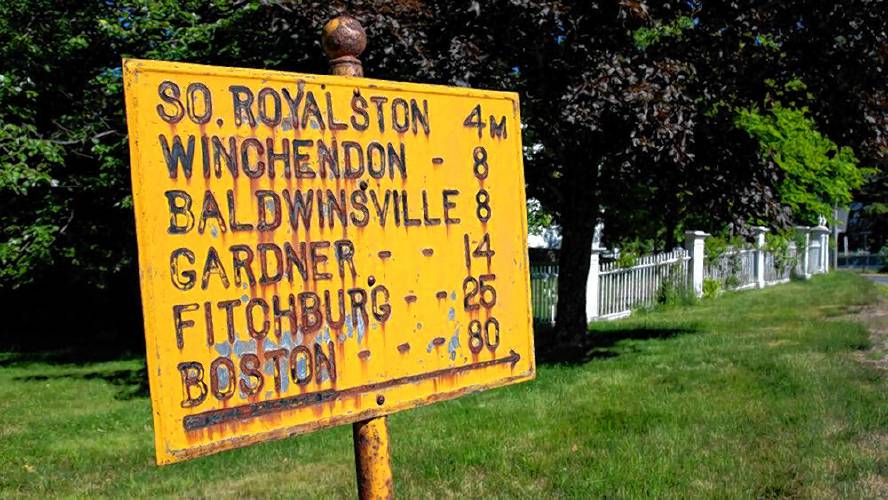
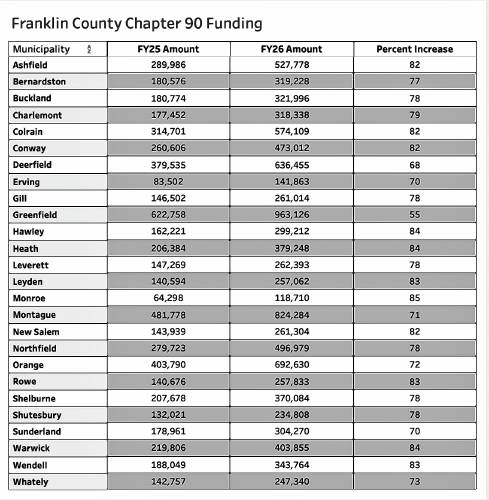





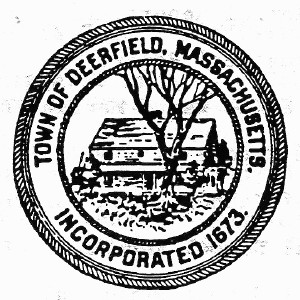 New panel to review senior housing proposals in Deerfield
New panel to review senior housing proposals in Deerfield Shutesbury reviewing how to improve safety on Lake Wyola in wake of accident last summer
Shutesbury reviewing how to improve safety on Lake Wyola in wake of accident last summer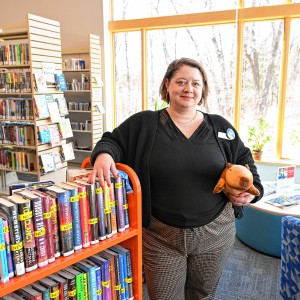 Local libraries react to state funding cuts, federal administrative leave
Local libraries react to state funding cuts, federal administrative leave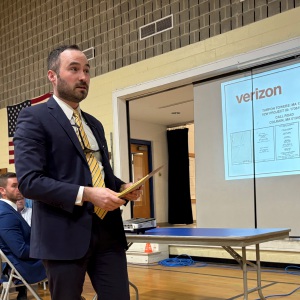 Colrain zoning board approves variance for Call Road cell tower
Colrain zoning board approves variance for Call Road cell tower
